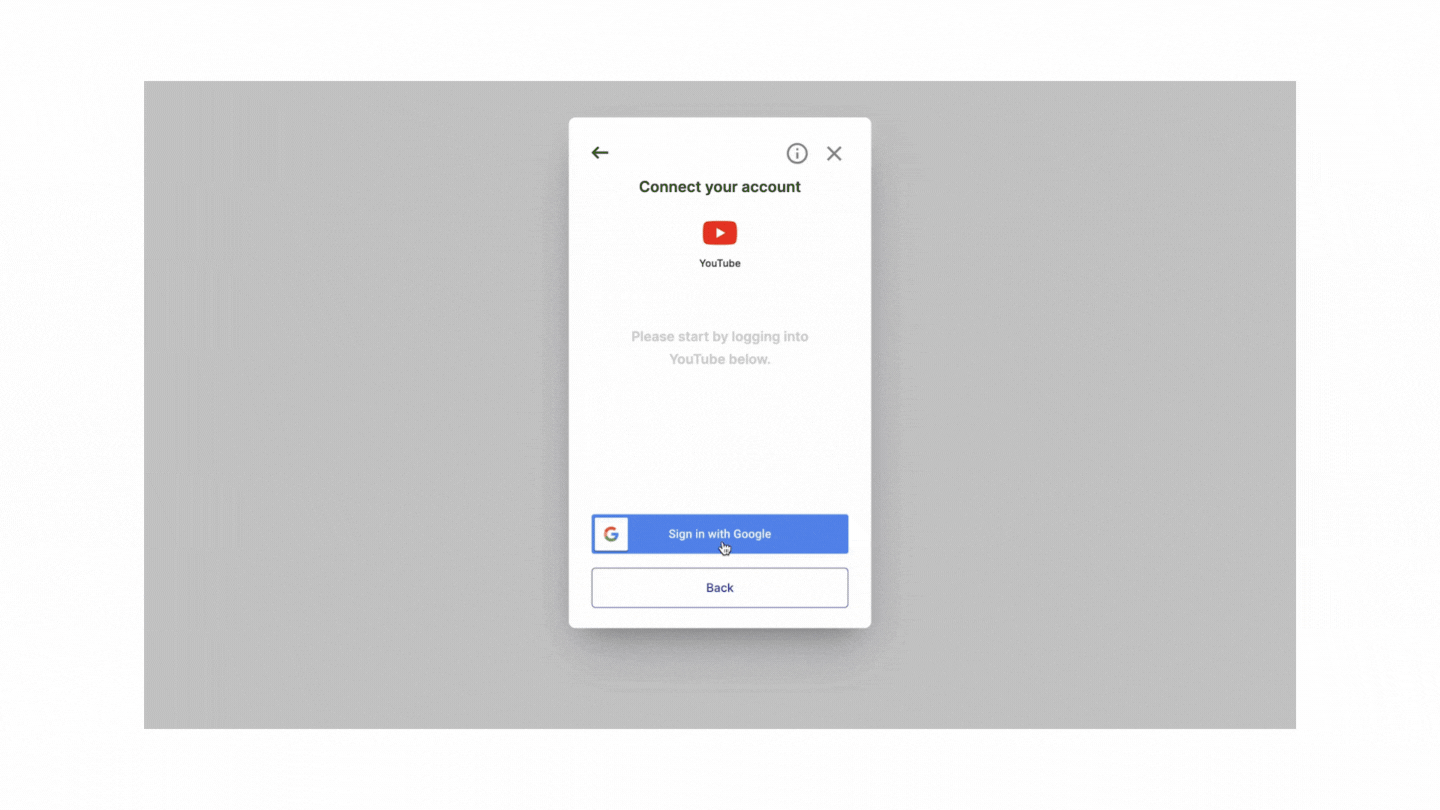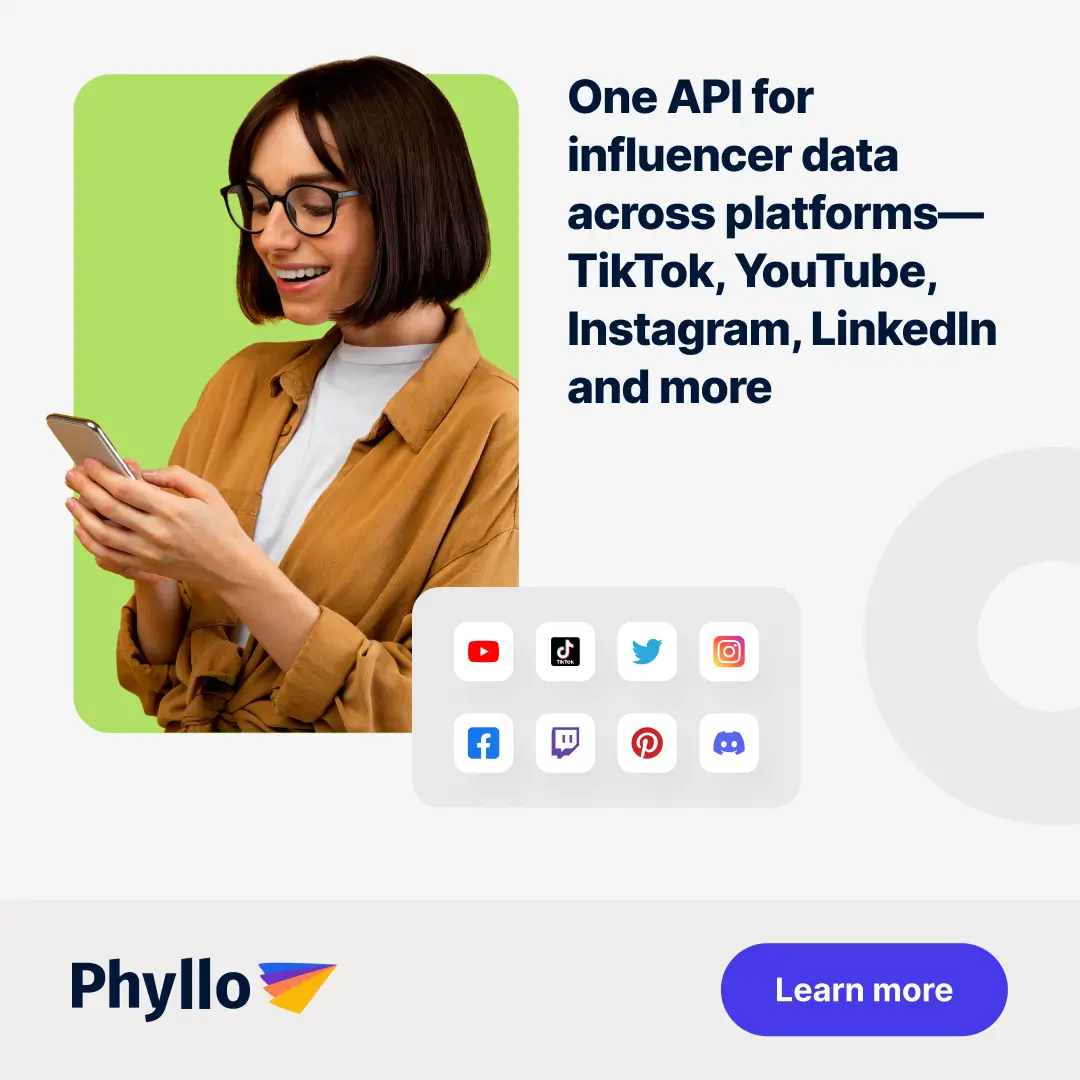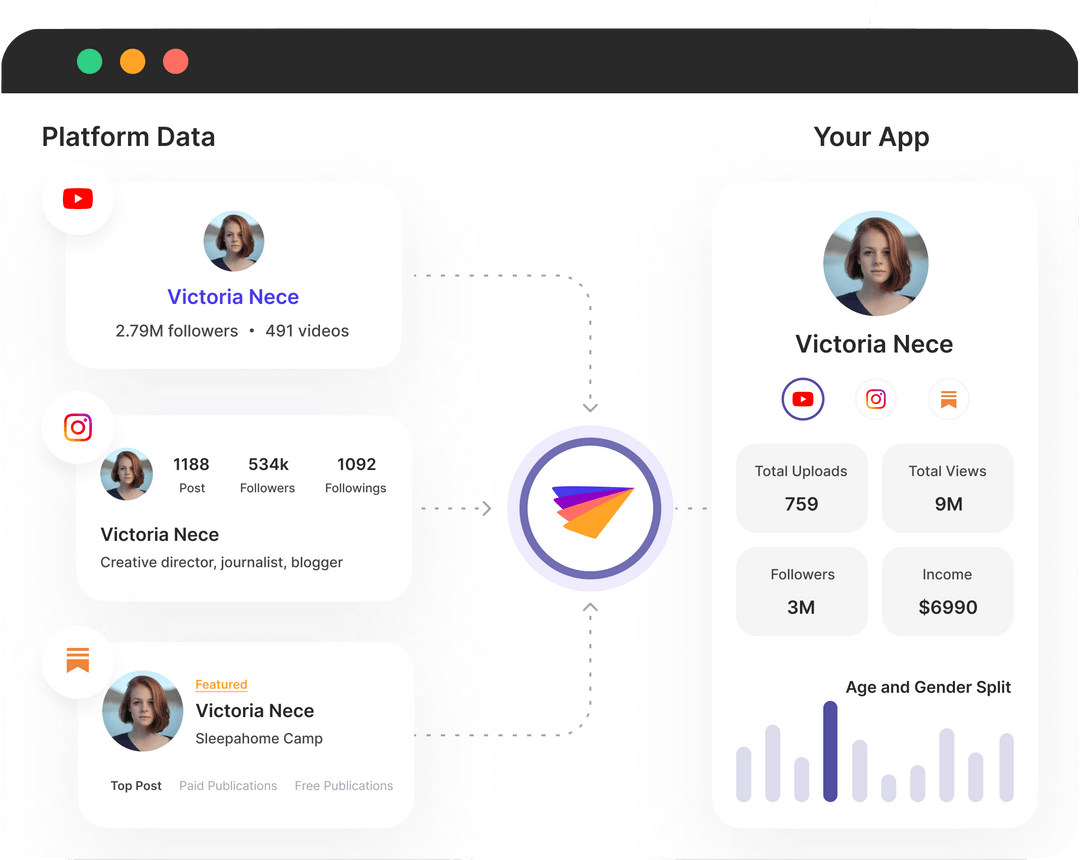The YouTube API or Application Programming Interface allows developers to skip the grind of writing every single line of code every time they need to access data. Youtube API allows a wide range of features and functionalities that makes it valuable to businesses. It allows developers to retrieve data at a mass scale without needing to access individual videos and channels. Developers can simply use predefined functions and protocols to curate YouTube videos on a website.
The Youtube APIs become specially important for developers of the creator economy as they try and get access to influencer data directly from the platform to build exciting products.
The YouTube API gives access to YouTube’s data in a more comprehensive, scalable way than the standalone YouTube embed codes. Developers can retrieve entire playlists, users’ uploads, and even search results using the YouTube API.
Let’s have a look at the need for YouTube API integration, the current issues, and the potential solutions for developers working in the creator industry.
Why do creator economy companies need YouTube data?

A YouTube creator's identity is limited to the walls of the platform. Their hard-earned reputation is worthless outside these platform barriers. Creators want to break free from these restrictive walls and preserve their reputation even outside these platforms.
On the other hand, developers building for the creator economy require a simple solution that allows them to easily verify a large pool of creators across various social media platforms. This helps them create amazing products using this data and allows them to go to market as quickly as possible.
The current methods of verifying identities via screenshots, emails, and phone calls are not scalable and are too time-consuming. Developers need access to the creator’s first-party data directly from the source so they don’t need to worry about its authenticity and verification.
How do you developers get YouTube data?
Currently, developers can get data about creators on YouTube using one of the three methods:
- Data Scraping
Most third-party agencies use data scraping. They provide information via creators’ publicly available data. However, data scraping has many limitations:
- Many social media platforms, such as YouTube, Instagram, etc., discourage scraping. The data quality, therefore, is unreliable.
- Data scraping provides only publicly visible data but not private metrics such as post impressions, which is an essential metric for many brand engagement/CPM calculations.
- It does not provide trusted audience demographics directly from the underlying platform as this data is private to the creator. Hence audience profiles are approximations and vary from one third-party provider to another for the same creator.
- It leaves the onus of creator verification to the influencer marketing platforms.
- Pseudo login
Another way to get the creator’s information is via pseudo logins. Few creator-catering agencies provide a secure login environment where they take YouTube IDs and passwords from consented creators to take out the required data. However, social media platforms like YouTube are making secure logins more and more difficult, making it a non-reliable solution.
- API integration:
A secure and consent-driven way of getting creator data is via the API integration route.
This method provides you with first-party data of YouTube creators, including post login/private data. Data attributes visible only to the creators from YouTube include:
- Views
- Audience demographics
- Content consumption metrics - Video view duration, saves, shares, etc.
Challenges of direct integration with YouTube developer APIs
- YouTube places extremely restrictive quota limits. It requires significant compliance effort to increase the quota.
- Multiple APIs must be integrated to fetch data across profiles, videos, playlists, demographics, and income. These APIs are dynamic and constantly updated by YouTube, requiring significant ongoing effort by developers. Here is the official data API resource for YouTube: https://developers.google.com/youtube/v3
- YouTube provides granular permissions to creators to share data since the number of permissions is higher. Permission management becomes a challenge. This requires significant trust to be built with creators to ensure they provide the required permissions to fetch data.

- Developers need to go through long compliance cycles to get access to live YouTube APIs

Using Phyllo YouTube API integration to get creator-consented data
Phyllo provides you access to updated YouTube data through just four APIs, allowing you to fetch all relevant creator data including profile information, content information, content metrics, audience demographics data, and income information (ad payouts and subscription revenue).
Phyllo acts as the universal API for creator data. Rather than thousands of developers building their integrations with YouTube, TikTok, Patreon, Spotify, and Instagrams of the world, Phyllo has made these integrations scalable and trustable. This allows developers of the creator economy to work with a single easy-to-integrate API.
Phyllo provides the following creator data from YouTube:
- Profile data
- Content feeds
- Audience demographics
- Content views
Phyllo vs. Third Party aggregators for YouTube data
- Quality of data: Phyllo provides you with highly accurate and credible creator data data directly from the true source - platform APIs.
- In tandem with source platforms: Phyllo does not work against the source platforms and rather works with them. The data pipe performance is far superior to those derived from data scraping, which is discouraged by the source platforms.
- Webhooks: Phyllo provides webhooks so developers can know when a creator has updated their data rather than shooting in the dark. This also allows developers to improve their page load time when requesting data. Third-party agency API offerings only support async ‘on-demand’ data requests that take time to fetch the data from the platforms.
- Audience Data: Phyllo’s audience data comes from the platform APIs and gives the data that a creator sees post logging into their dashboard. TPAs run approximations to get this data.
- Higher data refresh frequencies: Phyllo typically refreshes creator data at a frequency of 24 hours or sooner, while Third-party aggregators that manage databases of millions of creators refresh their data at much lower frequencies.
Business use cases for YouTube data
There are several ways in which businesses are using YouTube creator data to build amazing products. Here are a few of them:
- Automated Verification: Phyllo provides a consented data pipe for YouTube creators to authenticate and prove they are who they claim to be. It also asks them to give access to their data to any developer for validation. Developers can use our REST APIs to retrieve information about a creator's identity, income, and engagement on platforms such as Instagram, YouTube, TikTok, Twitch, OpenSea, Discord, Shopify, Substack, and so many others.
- Influencer Marketing: Brands want to invest in creators that are right for them. They also want to ensure that they are dealing with the trusted creator and not an impersonator or a fraud, and the onus of verification falls on the influencer marketing platform.
Phyllo’s Identity API provides creators’ profile-level information such as their followers, following, subscribers, and other reputation metrics. It also includes audience demographics data (gender, age distribution, location, etc.) to determine how valuable a creator is to the brands.
- Creator Tools: Creators build their platform with creator tools. These platforms become a revenue source for creators who charge their fans.
These fans know the creators from YouTube and are coming to this platform to buy courses/merchandise from the creator. These platforms face a significant identity problem because fans have no way of knowing the platform belongs to the original creator and no fraudulent entity trying to pose as the creator. With Phyllo’s data pipe, this issue gets addressed.
- Fintech
Fintechs must ensure that the correct creator benefits from their financial services, such as credit cards, insurance, and loans, before offering them to creators.
The standard wage slip or other paperwork is not available to the creators. To get a loan or insurance, the only proof they have to show is the number of followers they have and the amount of engagement they get on their posts. Banks must ensure that the engagement shown is for the creator's own work, not for someone else’s.
Again, Phyllo's data pipe is critical in this case to authenticate the person’s identity.
- Web3
Creators are releasing NFTs and tokens on web3 platforms, and fans are familiar with these creators from web2 platforms like YouTube.
Verifying NFT creators' web2 reputations and social identities ensure that fans purchase from the artists they love and follow, rather than a fake individual impersonating the creator.
Verifying identity also helps prove NFT ownership to access NFT-based membership DAOs or promotions.

What about Creator Data Compliance?
Recent data privacy laws like GDPR and CCPA have put a massive focus on consented data. The California Consumer Privacy Act of 2018 gives consumers more control over the personal information that businesses collect about them; this includes:
- The right to know about the personal information a business collects about them and how it is used and shared;
- The right to delete personal information collected from them (with some exceptions);
- The right to opt-out of the sale of their personal information; and
- The right to non-discrimination for exercising their CCPA rights.
Businesses are required to give consumers specific notices explaining their privacy practices. The CCPA applies to many companies, including social media platforms.
To comply with these restrictions, social media platforms like YouTube have become even more cautious while handling their data. This means any integration with YouTube has to be completely compliant and with the creators' consent.
Phyllo not only provides creator-consented data without scraping, but it also eliminates the need for developers to know all such compliances. Phyllo takes care of region and platform-specific restrictions so that developers can focus on creating products on top of available data.
Conclusion
Sponsored YouTube videos and influencer-brand partnerships continue to drive results and revenue for creators and brands. With a highly targeted, engaged audience, YouTube influencers will continue to diversify their content including vlogs, product reviews, and much more.
With audiences catering to the particular platform, businesses will create more products with Youtube, and developers and product teams will need access to real-time, quality creator data.
To know more about how Phyllo can empower your business with Youtube creator data, schedule a call here.
.svg)







.jpg)
.jpg)
.jpg)